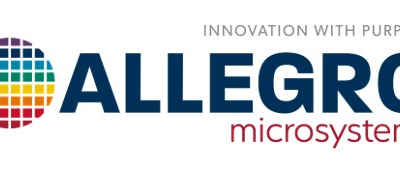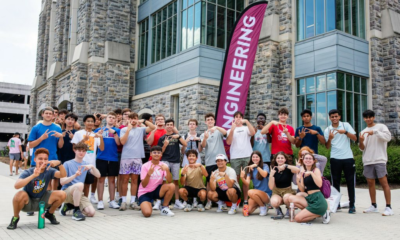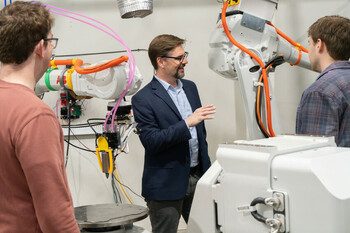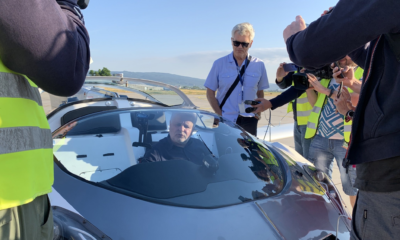Tech News
Michelle Belleville – Science@NASA
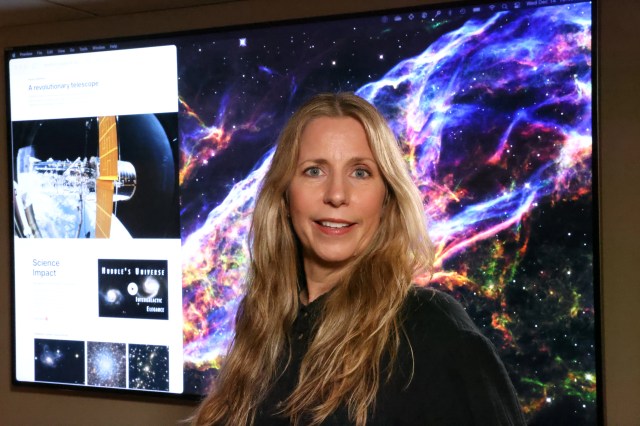
Web Design Lead
Michelle Belleville’s career plan was all about stars.
But not the kind you’re thinking of.
“I wanted to be a musician,” Michelle said. “I wanted to be a rock star.”
And when she left college to jump wholeheartedly into the music scene, she found a complex, enriching world of stagecraft that would eventually lead her to a role as a creative lead and design strategist for NASA projects including the Hubble Space Telescope.
“I still have, of course, a love of music,” Michelle said. “But it’s the love of the whole experience of theater and music ― and designing and building a better experience for everyone so they can enjoy the love that I have for it, so they’re able to experience that as well.”
Michelle Belleville
Web Design Lead
Though her interest in design started early ― “My mom said that I was always laying out things or trying to design my room or redesign everything. I always had that in me as a kid.” ― Michelle started her career in music, performing as a traditional jazz bassist before moving down the path of punk and alternative rock. She toured throughout New England and later Minneapolis with a number of groups, enjoying the freedom to experiment with different types of music. By day, she worked at an insurance company, which paid more bills than performing. But it wasn’t a situation where the day job was a necessary evil ― Michelle truly enjoyed working with data and equations. “I was going to either be an accountant or a rock star.”
Michelle excelled at organizing numbers and understanding their impact. As computers and the internet became imbued in daily life, she began to use those numbers to tell stories. “You could create spreadsheets, beautiful spreadsheets and visualizations. You could visually design and program these websites and everyone on the planet who was connected to the internet could see those results, and that’s when I really started getting excited about the new technology coming around.”
In her music career, she found herself drawn to the design aspects of the music industry ― the stage design, lighting, outfits ― as well as the computers that began steadily working their way into performances. “I had one of the original drum machines and I would start programming it out,” she recalled. “You would have to sit in front of the machine and play bass and some guitar and have a tape recorder next to it, and then pull it all together, and I would bring that music I recorded to other musicians.”
Experimenting with computers, Michelle learned how to code and create visual elements on the screen before the software existed to make that work more intuitive. She became involved in creating band logos and materials, manipulating lighting, and even dabbling in sound production. At the time, there was no formal education for most of these rock concert production aspects. “I would go to the theater or rock shows or a large stadium experience and start talking to people about how they do what they do, and I dove into sound production and lighting production, and all the way I pretty much learned on my own. ”
At her day job, she moved from accounting to sales as her skills at turning numbers into dazzling presentations ― complete with visualizations and music and print materials ― came into demand. She was hired as a creative director at a tech development firm in Virginia, working primarily on websites, and then as a creative director for a design studio working in the digital realm.
What she was embracing and learning in bits and pieces, she realized later, was something now called “user experience.”
“It’s where you’re completely immersed in a specific subject, be it a website or walking into a coffee shop. You want to have that experience of everything from smelling the coffee to seeing a beautifully laid out room to spending money and tasting the coffee,” Michelle said. She was fascinated by how all the pieces of a concert united to create a unique immersive experience, and how the same elements on a small scale could get people excited about a product. “I loved the visual side of that experience and the computer side of it. You can design a whole visual experience on a laptop and send it off, or have the band tour with that laptop and they just plug into the console and go venue to venue and have the same visual experience.”
Michelle was hired by NASA in 2018 as a graphic designer, eventually becoming the senior creative project lead for flight projects. She is the design lead for both the Hubble mission website and the NASA Science web modernization project, which produced the new design system for NASA.gov. She works on overall design strategy, information architecture and navigation for the Hubble website and helps coordinate and creatively design and modernize websites throughout NASA. As a user experience expert, she uses both design and coding skills to ensure that information from NASA missions reaches the public in a creative, engaging and appealing way.
The job combines her love of numbers with her design-oriented drive to create the best possible visual experience. “With NASA, you need to understand both of those sides of it to produce something that represents what the scientists or engineers are trying to portray in a way that the end user understands it and digests it,” she said. “They’ve always been hand-in-hand all along.”
NASA explores the unknown in air and space, innovates for the benefit of humanity, and inspires the world through discovery.
Tech News
Exploring Startup Opportunities In Alternative Fuel Technology – Forbes

In this article, we explore four startup opportunities in alternative fuel technology, ranging from … [+]
In the context of the ever-growing energy consumption demands of our global civilization, especially bearing in mind the rising living standards in some of the most populous areas in Asia and Africa, combined with the environmental impact of the energy sector, innovations in energy and fuel technology are likely some of the most important and impactful technological developments to look forward to in the coming decades.
With this in mind, if you are a startup founder looking to change the world for the better alternative fuel technology is a promising field to focus your energy on. Startups at the forefront of this movement have the opportunity to revolutionize the transportation sector and accelerate the transition to a sustainable future. Моreover, because of the environmental impact of such technologies finding funding for your startup could be easier because of the availability of public funding for green technologies in a generally favorable regulatory environment.
In this article, we’ll explore four startup opportunities in alternative fuel technology, ranging from electric vehicle charging infrastructure to biofuels, highlighting their potential for innovation and market disruption.
Electric vehicles (EVs) are becoming increasingly popular as consumers and governments prioritize cleaner transportation options. However, the widespread adoption of EVs hinges on the availability of reliable and convenient charging infrastructure.
Startups in this space can focus on developing innovative solutions such as fast-charging stations, wireless charging technology, and smart grid integration. For example, companies like ChargePoint and EVgo are pioneering the development of EV charging networks across the globe, catering to the growing demand for electric mobility.
The opportunity for startups lies in addressing key challenges such as scalability, interoperability, and user experience. By leveraging advanced technologies and strategic partnerships, startups can play a vital role in expanding EV charging infrastructure and accelerating the adoption of electric vehicles.
Battery technology is a critical component of alternative fuel technology, enabling energy storage for electric vehicles, renewable energy systems, and portable electronics. In fact, energy storage technology is becoming a choke-point for most of the mass adoption and practical feasibility of a lot of EV and alternative energy solutions.
Startups in this space can focus on developing advanced battery chemistries, materials, and manufacturing processes to improve performance, safety, and cost-effectiveness. For example, companies like Tesla and Panasonic are leading the charge in lithium-ion battery production, driving down costs and improving energy density.
The demand for high-performance batteries is expected to surge as electric vehicles and renewable energy installations continue to grow. Startups that can innovate in areas such as solid-state batteries, silicon-anode technology, and battery recycling have the potential to disrupt the market and capture significant market share. Moreover, advancements in battery technology can unlock new applications such as grid-scale energy storage and electric aviation, further expanding the market opportunity for startups.
Hydrogen fuel cells offer a promising alternative to traditional combustion engines, providing zero-emission power for various applications, including vehicles, drones, and stationary power systems. Startups in this space can focus on developing innovative solutions for hydrogen production, storage, distribution, and fuel cell technology.
For example, companies like Ballard Power Systems and Plug Power are leading the commercialization of hydrogen fuel cell technology for transportation and industrial applications.
The scalability and versatility of hydrogen fuel cells present a compelling opportunity for startups to drive innovation and market penetration. By overcoming technical challenges such as cost, efficiency, and infrastructure, startups can position themselves as key players in a possible transition to a hydrogen-based economy. Additionally, government incentives and industry partnerships can provide critical support for startups seeking to capitalize on the growing demand for clean energy solutions.
Biofuels offer a renewable alternative to conventional fossil fuels, derived from organic sources such as biomass, algae, waste materials, or agricultural residues. Startups in this space can focus on developing sustainable biofuel production processes that minimize environmental impact and maximize energy efficiency.
For example, companies like Renewable Energy Group and Gevo are leveraging advanced biotechnology and feedstock optimization to produce low-carbon biofuels for transportation and heating applications among others.
The abundance of organic feedstocks and the potential for carbon neutrality make biofuels an attractive option for reducing greenhouse gas emissions and mitigating climate change. Startups that can innovate in biofuel production, distribution, and certification have the opportunity to disrupt traditional energy markets and drive the transition to a more sustainable energy future. Additionally, government mandates and corporate sustainability initiatives create a favorable regulatory environment for biofuel startups to thrive.
Tech News
GHSP Leverages Allegro MicroSystems' Technology to Shift – GlobeNewswire
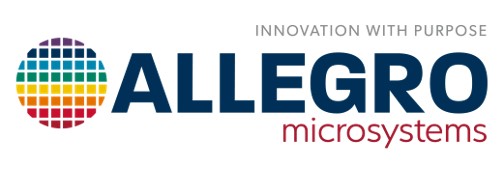
| Source: Allegro MicroSystems, Inc.
MANCHESTER, N.H., April 30, 2024 (GLOBE NEWSWIRE) — Allegro MicroSystems, Inc. (“Allegro”) (Nasdaq: ALGM) a global leader in power and sensing semiconductor technology for motion control and energy efficient-system is pleased to announce, that GHSP, a global provider of mechanical and electromechanical systems and portfolio company of JSJ Corporation, is closely collaborating with and has adopted Allegro’s best-in-class gate driver and vehicle sensor technology for its new eVibe vibration enhancement system.
In the rapidly evolving world of xEV technology, there is a new class of xEV enthusiasts who crave a more immersive motoring experience. GHSP’s eVibe system transforms xEV driving by providing drivers with the noise and vibrations that mimic the familiar feel and sounds of a traditional internal combustion engine. At the heart of this next-level technology, is Allegro’s A89500 motor driver and APS12215 Hall-effect latch, which provide best-in-class performance and switching capabilities.
“From the beginning, our challenge has always been to create a solution that would address a unique and growing xEV market segment,” said Dan Dawiedczyk, President of GHSP. “We are excited to collaborate and combine our industry experience and expertise, to help bring our vision to life. Together, Allegro and GHSP are developing groundbreaking innovations. We look forward to a winning partnership for many years to come.”
Helping to elevate the end product, Allegro’s A89500 motor driver allows for high power density and fast switching to help provide instant response and feel. Its transient robustness and wide input voltage range make it a standout solution in the market. The APS12215 Hall-effect latch, on the other hand, provides high-temperature performance and stable switching capabilities, enabling the eVibe system to precisely track and monitor the position of the motors’ unbalanced weights, ultimately leading to a more realistic vibration experience. The eVibe technology allows several applications including ADAS, ICE emulation, or high performance.
“For more than a decade, Allegro has worked closely with market-leading automotive partners to develop innovative solutions that help shift the future of driving, power and performance in electric vehicles,” said Suman Narayan, Allegro’s Senior Vice President, Products. “Our latest collaboration highlights a new, growing market segment and demand for Allegro’s technology. We value GHSP’s automotive expertise and look forward to our continued partnership as we develop solutions that drive innovation.”
The impact of eVibe extends beyond just the driving experience. It represents a shift towards the future of xEV technology and the way owners engage with their vehicles. From mimicking an idle feel to simulated engine throttle and high-speed gear shifts via premium vibration indicators, GHSP’s technology is providing drivers with a more immersive and connected drive. This innovation has the potential to reshape the xEV market, catering to a wider range of custom options and individual customer preferences, while also helping to further the adoption of electric vehicles.
On Thursday, May 2, GHSP and Allegro will host a virtual round table discussing “The Evolution of eVibe with GHSP and Allegro MicroSystems.” To learn more and register for this event please visit: https://allegromicro.com/en/applications/automotive
For more information about the eVibe system please visit: https://www.ghsp.com/evibe
About Allegro MicroSystems
Allegro MicroSystems, Inc. is a leading global designer, developer, fabless manufacturer and marketer of sensor integrated circuits (“ICs”) and application-specific analog power ICs enabling emerging technologies in the automotive and industrial markets. Allegro’s diverse product portfolio provides efficient and reliable solutions for the electrification of vehicles, automotive ADAS safety features, automation for Industry 4.0 and power-saving technologies for data centers and clean energy applications. For additional information, please visit https://www.allegromicro.com/en/.
About GHSP
GHSP is a privately owned company based in Grand Haven, Mich., that specializes in the design and manufacturing of innovative control systems and technology solutions primarily for the automobile and high-end appliance industries. Founded in 1924, GHSP has locations in North America, Europe and Asia. GHSP is a portfolio business within JSJ Corporation, a growth firm with global manufacturing, distribution and service businesses that focus on highly technical skills to deliver engineered solutions. Learn more at GHSP.com and JSJcorp.com.
Allegro Contact:
Laura Kozikowski
Sr. Director of Global Marketing and Corporate Communications
[email protected]
GHSP Contact:
Liz Hoffswell
Marketing & Communication Leader
[email protected]
Tech News
BAE Systems' electric drive technology to power GILLIG's new hydrogen fuel cell transit buses for zero-emission … – BAE Systems
-

 General Knowledge2 years ago
General Knowledge2 years agoList of Indian States and Capital
-

 General Knowledge2 years ago
General Knowledge2 years agoList Of 400 Famous Books and Authors
-

 Important Days4 years ago
Important Days4 years agoImportant Days of Each Month
-

 General Knowledge2 years ago
General Knowledge2 years agoCountries and their National Sports
-

 General Knowledge3 years ago
General Knowledge3 years agoCountry Capital and Currency
-

 Important Days3 years ago
Important Days3 years agoHoli
-

 General Knowledge2 years ago
General Knowledge2 years agoList of Indian President
-

 General Knowledge2 years ago
General Knowledge2 years agoList of Indian Vice President




